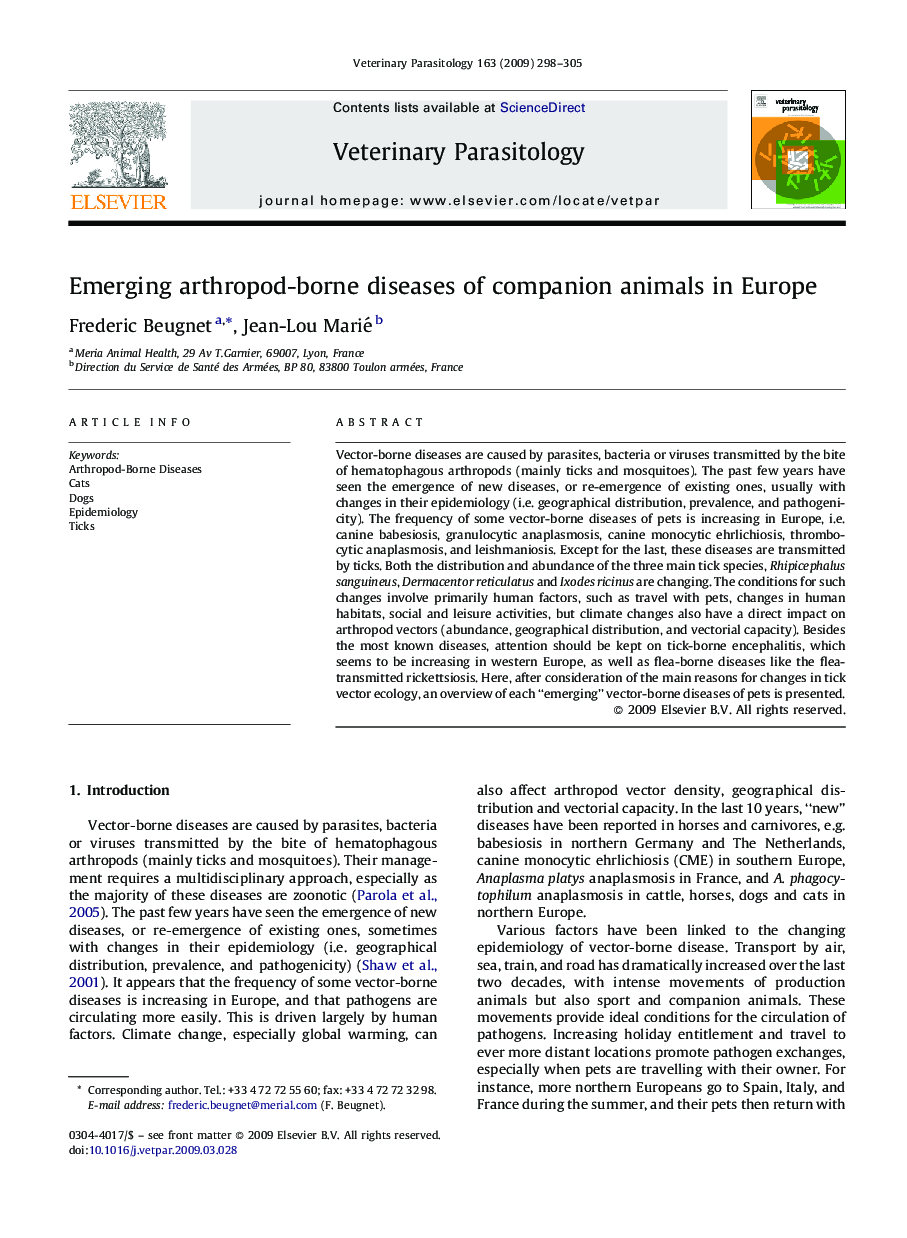| Article ID | Journal | Published Year | Pages | File Type |
|---|---|---|---|---|
| 2471228 | Veterinary Parasitology | 2009 | 8 Pages |
Vector-borne diseases are caused by parasites, bacteria or viruses transmitted by the bite of hematophagous arthropods (mainly ticks and mosquitoes). The past few years have seen the emergence of new diseases, or re-emergence of existing ones, usually with changes in their epidemiology (i.e. geographical distribution, prevalence, and pathogenicity). The frequency of some vector-borne diseases of pets is increasing in Europe, i.e. canine babesiosis, granulocytic anaplasmosis, canine monocytic ehrlichiosis, thrombocytic anaplasmosis, and leishmaniosis. Except for the last, these diseases are transmitted by ticks. Both the distribution and abundance of the three main tick species, Rhipicephalus sanguineus, Dermacentor reticulatus and Ixodes ricinus are changing. The conditions for such changes involve primarily human factors, such as travel with pets, changes in human habitats, social and leisure activities, but climate changes also have a direct impact on arthropod vectors (abundance, geographical distribution, and vectorial capacity). Besides the most known diseases, attention should be kept on tick-borne encephalitis, which seems to be increasing in western Europe, as well as flea-borne diseases like the flea-transmitted rickettsiosis. Here, after consideration of the main reasons for changes in tick vector ecology, an overview of each “emerging” vector-borne diseases of pets is presented.
